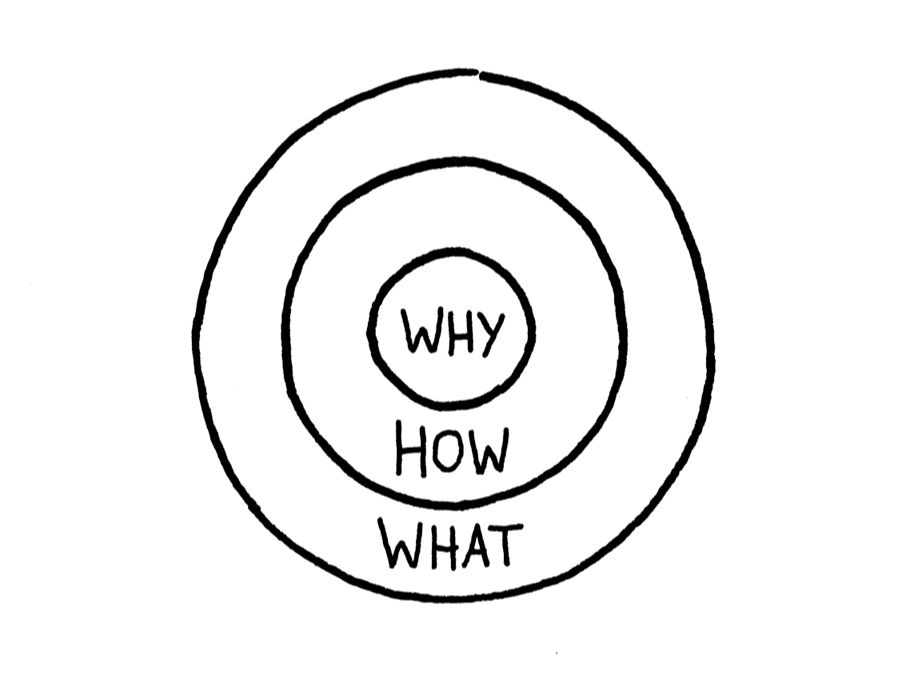
May 8, 2016 | Intention

I had the privilege this week of facilitating a program for leaders in eastern NC working to improve the overall health and wellness in their communities. These folks are so inspiring. The challenges they face are deep and complex and remind me of the importance of ensuring that our leaders are equipped with skills and resources to do their impactful work.
One of the exercises we completed together was around managing your energy, based on a Harvard Business Review article by the same title. The premise is to manage your energy, not your time. Our lives are so full and demanding, with work, family, and community obligations. Self care – if we think of it at all, often gets minimal if any priority at all. It can stretch us to our breaking point.
My favorite take aways from the article are:
- Work smarter, not harder. Resist the seductive allure of putting in more hours to get ahead. This can be a short term strategy on occasion but becomes unhealthy if sustained over time.
- Time is a finite resource. Energy is a different story. Energy comes from four main wellsprings within us: the body, emotions, mind, and spirit. In each, energy can be expanded and renewed by establishing and practicing specific rituals.
- Organizations need to shift their emphasis from getting more out of people to investing more in them, so they are motivated – and able – to bring more of themselves to work every day.
- Recognize the costs of your energy depleting behaviors and take personal responsibility for changing them. All it takes is beginning to implement simple practices one step at a time.
My group of participants came up with a few best practices in each area. The list was so good, I wanted to share it with you. I hope you find some good ideas for yourself and add more of your own!
Spiritual:
- Be in nature
- Pray
- Play music
- Keep things in perspective
- Let your light shine
- Express gratitude…often
- Enjoy the moment(s)
- Laugh (especially at yourself)
- Stay away from negative people.
- Follow your passion
- Journal
- Forgive and move on
- Avoid toxic situations
Emotional:
- Play music
- Journal
- Practice yoga
- Meditate
- Exercise
- Call friends, family, confidants
- Eat ice cream
- Drink vino…especially with a good friend
- Discern which battles are worth fighting
- Take a long, relaxing drive
- Walk, run
- Listen to inspirational words, messages
- Practice deep breathing
- Use essential oils
- Cry
- Hold a baby / pet
- Watch TV that inspires and relaxes you (Oprah, Undercover Boss, etc)
Mental:
- Do relaxation exercises
- Close your eyes and imagine your favorite place (take a brief mental vacation)
- At work, close your door and relax for 15-20 mins
- Take a mental health day
- Listen to your favorite music
- Stop the cycle – interrupt the process
- Retail therapy
- Pedicure – spa day
- Breathe
- Do something for someone else
- Spend time w/ people who cheer you
- Read
- Meditate
- Practice yoga
Physical:
- Work out regularly
- Get plenty of sleep
- Take on a project that excites you
- Eat well
- Connect with a hobby
- Get outside
- Spend time with family
- Enjoy an adult beverage…especially with a friend
- Drink H2O
- Limit sugar intake
- Socialize
- Garden
- Train for something, like a triathlon
- Get active! Run, bike, sail, surf, wake board
- Walk daily
- Yoga
- Cooking
- “Break the fast” – start your day with a healthy meal to fuel you
- Read for enjoyment
- Spend time with pets
 About Jeanie Duncan: Jeanie is President of Raven Consulting Group, a business she founded that focuses on organizational change and leadership development in the nonprofit sector. She is a senior consultant for Raffa, a national firm working with nonprofit clients to lead efforts in sustainability and succession planning, executive transition and search. Additionally, Jeanie serves as adjunct faculty for the Center for Creative Leadership, a top-ranked, global provider of executive leadership education.
About Jeanie Duncan: Jeanie is President of Raven Consulting Group, a business she founded that focuses on organizational change and leadership development in the nonprofit sector. She is a senior consultant for Raffa, a national firm working with nonprofit clients to lead efforts in sustainability and succession planning, executive transition and search. Additionally, Jeanie serves as adjunct faculty for the Center for Creative Leadership, a top-ranked, global provider of executive leadership education.

Feb 23, 2015 | Leadership

The foundation of any highly functioning team is trust. While critically important, it can be rare among teams, and we all know it takes time and intentional practice to build. Trust is all about vulnerability – get comfortable being open, honest, and ‘exposed’ to one another around failures, challenges, and areas for development and trust begins to emerge. The process is well worth the effort invested and can be cultivated with sustained intention, purpose, and focus.
In many workplaces, what we find is a group of individuals who have been hired over time and are expected to begin working together without any prior relationships or baseline of trust being formed. They may even call themselves a team, but in reality, they’re individual performers charged with accomplishing a group goal. This is very different from a “team.” And it’s not a formula for success, especially in light of challenges and potential conflict inherent to any project or task.
Try these trust-building exercises to help develop a strong, highly functioning team:
- In his book “Overcoming the Five Dysfunctions of a Team,” Patrick Lencioni shares the Personal Histories Exercise. It works like this: At a staff meeting, go around the room and have each person respond to a question (or questions) that requires them to share something personal and relevant. For example, the author offers this three-part question: 1) Where they grew up, 2) How many kids were in the family, and 3) What was the most difficult or important challenge of their childhood. In responding, the group learns a lot about one another, and in the process, they become more comfortable being open about other things. Empathy develops, and it also helps individuals overcome what Lencioni calls the fundamental attribution error, where we tend to falsely attribute the negative behaviors of others to their character (false conclusion: people do bad things because they’re bad).
- Administer a behavioral assessment with a team – a tool that will provide an objective, reliable means for understanding and describing one another. There are many from which to select – Meyer’s Briggs, DISC, Strengths Deployment Inventory, to name a few – and each can be an effective means to self-identify their ‘type’ and provide a common vocabulary to describe similarities and differences. Such a tool can be completed with a team in as little as a couple of hours or extended to a half- or full-day experience.
- Another proven way for a team to learn to work together to build trust is to attend a high initiative or ropes course. This experience typically takes at least a half-day and is offered to teams by independent training organizations. Hanging at the end of each other’s rope is a great way to increase risk taking and trust levels, using an ultra safe and highly supervised course.
Key to making any of these exercises work is to anticipate initial objections and have proper facilitation. These experiences, when implemented well, can establish a foundation of team trust and set a path for achieving great results together.
_______
Lencioni, P. (2005). Overcoming the five dysfunctions of a team: a field guide. San Francisco: Jossey-Bass.
Also read these related blog posts:
Perspectives on Conflict with Your Boss
Bridge the Divide of Conflict with Direct Reports
Into the Storm: Mastering Team Conflict
A Process for Managing Peer Conflict
 About Jeanie Duncan: Jeanie is President of Raven Consulting Group, a business she founded that focuses on organizational change and leadership development in the nonprofit sector. She is a senior consultant for Raffa, a national firm working with nonprofit clients to lead efforts in sustainability and succession planning, executive transition and search. Additionally, Jeanie serves as adjunct faculty for the Center for Creative Leadership, a top-ranked, global provider of executive leadership education.
About Jeanie Duncan: Jeanie is President of Raven Consulting Group, a business she founded that focuses on organizational change and leadership development in the nonprofit sector. She is a senior consultant for Raffa, a national firm working with nonprofit clients to lead efforts in sustainability and succession planning, executive transition and search. Additionally, Jeanie serves as adjunct faculty for the Center for Creative Leadership, a top-ranked, global provider of executive leadership education.

Feb 10, 2015 | Leadership
I recently completed some forecasting and goal setting for my business. As I went through this process, I pulled from several resources that inspire and motivate me, a favorite of which is Simon Sinek’s “Start With WHY.” He expresses his message through what he calls The Golden Circle:

His premise is that you must begin with your WHY, and from there figure out your HOW and WHAT. When Sinek studied successful leaders, he found a common denominator – they inspire through a clearly and passionately articulated WHY. They hold their WHY front and center – like a North Star – to guide their WHAT and HOW. Everything emerges from the core WHY, or belief. HOWs are the actions they take to realize that belief. And WHATs are the results of those actions.
I’ve known about Sinek’s philosophy for a while, but I find even greater meaning in it now – not only for my own personal and business reflection, but also for my clients.
According to this line of thought, most every person and organization knows WHAT they do. That’s usually pretty clear. Some know HOW they do it. But very few know WHY they do WHAT they do. Or at least they don’t stop to think about it or articulate it frequently and consistently.
By WHY, Sinek doesn’t mean ‘to earn revenue,’ but rather, he’s referring to your purpose, your cause, your belief. Sinek asks, “WHAT makes you get out of bed in the morning? WHY do you care? And WHY should others care?” Think of it as communicating from the inside out.
Think for a moment – We busily go about our day-to-day. We take on roles, assignments, projects, and business…and before long we’ve amassed this huge volume of ‘stuff’ without pausing to think about WHY we’re doing it. Even if we know our WHY, we can fail to consciously use it as our lens or filter for making decisions.
As I went through my own reflection, I see room for getting clearer with my own “WHY” and doing a better job of sharing my story.
A theme for me over my life is that I’m a self-starter and risk taker. I grew up in an entrepreneurial family with my parents owning two businesses. My siblings and I were involved in those businesses where there was no task too great or small; we all pitched in to get it done. And if we didn’t know how to do it, we figured it out. Failures were acknowledged as just one step closer to succeeding.
When I finished college, my first jobs were new positions where I was responsible for creating the role. Later on, I set my vision and sites for what I wanted and set out to achieve it, including starting my own business. Through it all, I didn’t have all the information, the guidelines were ambiguous, and I needed to perform and produce results fast. I quite like this messiness – stepping into the unknown, bringing order to chaos, and charting a course where there isn’t one.
This pattern and energy shapes my WHY – To help people know WHAT they want, find their courage, step forward, and take risks. This is the path to which my life and my work is devoted.
Sinek offers, “People don’t buy WHAT you do. They buy WHY you do it. People don’t buy WHAT you sell. They buy WHAT you believe. And people follow you not because they have to, not because they are paid to, but because they want to.”
This concept comes alive every day in business:
- Strategy Development: For an organization to develop its goals, strategies, and tactics, it must first be crystal clear on its WHY, often presented most succinct in a well-crafted vision and mission. As Sinek offers, “It’s not just WHAT or HOW you do things that matters; what matters more is that your WHAT and HOW is consistent with your WHY.” With a WHY clearly stated in an organization, anyone within the organization can make a decision as clearly and as accurately as the top leader.
- Sustainability Planning: The products and services offered by many organizations are broad and complex. It’s important to critically and regularly examine these lines of business and ask, “WHY do we do this,” looking at both mission impact and financial return to gauge long-term sustainability. Yet, we can get so caught up in the day-to-day, that our WHAT mutates into a complex web without a clear connection to vision and mission, and with limited (or lost) return on investment.
- Succession Planning and Leadership Transitions: Sinek concludes that top executives are successful in great part because they inspire and embody what they believe. When the person who personifies the WHY departs without clearly articulating WHY the company was founded in the first place, they leave no clear cause for their successor to lead. “Successful succession is more than selecting someone with an appropriate skill set – it’s about finding someone who is in lockstep with the original cause around which the business was founded. Great 2nd and 3rd CEOs don’t take the helm to implement their own vision of the future; they pick up the original banner and lead the company into the next generation.”
I encourage you to get to your WHY. It yields greater confidence than ‘I think it’s right.’ It’s more scalable than ‘I feel it’s right.’ When you know your WHY, the highest level of assurance you can offer is, ‘I know it’s right.’
_______
Sinek, S. (2009). Start with why: how great leaders inspire everyone to take action. New York: Penguin Group.
 About Jeanie Duncan: Jeanie is President of Raven Consulting Group, a business she founded that focuses on organizational change and leadership development in the nonprofit sector. She is a senior consultant for Raffa, a national firm working with nonprofit clients to lead efforts in sustainability and succession planning, executive transition and search. Additionally, Jeanie serves as adjunct faculty for the Center for Creative Leadership, a top-ranked, global provider of executive leadership education.
About Jeanie Duncan: Jeanie is President of Raven Consulting Group, a business she founded that focuses on organizational change and leadership development in the nonprofit sector. She is a senior consultant for Raffa, a national firm working with nonprofit clients to lead efforts in sustainability and succession planning, executive transition and search. Additionally, Jeanie serves as adjunct faculty for the Center for Creative Leadership, a top-ranked, global provider of executive leadership education.

Sep 29, 2014 | Career, Coaching, Leadership

I believe deeply in the value and impact of coaching. Yet in my work, I’ve discovered that many people have never had a coaching relationship and aren’t quite sure what to expect. I would like to share more about leadership coaching, possibly dispel some myths, and offer perspective about when it might be right for you.
One way I like to think of leadership coaching as similar to how an elite athlete uses a coach. A good coach helps leaders develop clarity of purpose and focus on action. The relationship is a formal engagement in which a qualified coach works with an organizational leader in a series of dynamic, confidential sessions designed to establish and achieve clear goals that result in improved effectiveness for the individual, and often for his or her team and organization.
And to better understand what coaching is, it can be helpful to briefly highlight what coaching is not:
- Counseling or therapy, which is focused on insight into history, psychological healing, pain resolution, and coping mechanisms.
- Consulting, where a consultant offers external expertise to assess, analyze, and offer technical advice or recommendations to solve a particular problem or challenge.
- Training, with the intended outcome to impart knowledge from an expert to a student where the student gains or sharpens specific skills.
Every coaching relationship is unique due to the specific situation of the person seeking coaching and the coach’s approach. However, there are some key elements you can expect with the engagement.
Contracting – This refers to everything that’s involved in setting up the actual coaching relationship and the overall process, from when and how often to meet, whether you’ll meet in-person, by phone or other virtual platforms, to fee structure and billing, and how to handle appointment scheduling and changes.
Boundaries and Confidentiality – This includes such elements as how information is handled (confidentiality and report expectations) and how the coaching relationship fits into the existing network of relationships. Information provided by the client is kept strictly confidential except as otherwise authorized in writing by the client. For example, the coach and client may agree that the goals or results of the coaching work can be reported to his/her boss or other organizational representative. Also, the coach may support the client in preparation of reports he/she makes to a boss or other stakeholder.
Mutual Role Clarity – A primary value your coach brings is helping you decide and act more effectively, not thinking or deciding for you. Your coach will be an ally, supporter, and sounding board. You can expect him/her to be direct and honest, asking powerful questions and making empowering requests that support your desired outcome. As the client, you’ll get the most from your coaching relationship if you show up engaged, willing to examine yourself – your values, beliefs, behaviors, and impact, and are open to make changes necessary to become more effective. Its important to realize that coaching is a comprehensive process that takes time and may address any area of your life, including specific career aspirations, business projects, leadership, or personal topics such as finances, health, and relationships. Even if your coaching engagement is formed in a professional work context, you bring your full self to the experience and therefore “whole life” is taken into account.
I first hired a coach when I was considering applying for a top leadership position in my organization. I wanted to pursue the opportunity and felt I needed a partner with whom to review it from all angles – someone removed from the situation, who would ask me thought-provoking questions, and help me confirm that I was the right person at the right time.
Since that first experience, I’ve hired coaches over the years and now make it a part of my ongoing personal and professional development to retain a coach. The following are some situations where a coach can be particularly helpful:
- You and your organization are experiencing significant change and transition.
- Your organization is not growing as you believe it could.
- You’re unclear on where you need or want to be in five years.
- You’re experiencing increased complexity in your role and organization.
- You seek a confidential, safe space where you can express concerns and challenges.
- You are working too hard for the results you’re getting.
- Stress is taking toll on your health and relationships.
- You’re not spending time on the most productive tasks.
- You haven’t been able to build a great team you trust and that works well together.
- You’re not enjoying your work as much as you once did.
- You struggle with whole life balance.
Using a leadership coach as a developmental partner provides a rich opportunity to learn, reflect, change, and grow. Like any relationship, it’s important to know what to expect and to co-create a constructive alliance. Through your work together, you develop the skills, behaviors, and knowledge enabling you to increase your effectiveness.
 About Jeanie Duncan: Jeanie is President of Raven Consulting Group, a business she founded that focuses on organizational change and leadership development in the nonprofit sector. She is a senior consultant for Raffa, a national firm working with nonprofit clients to lead efforts in sustainability and succession planning, executive transition and search. Additionally, Jeanie serves as adjunct faculty for the Center for Creative Leadership, a top-ranked, global provider of executive leadership education.
About Jeanie Duncan: Jeanie is President of Raven Consulting Group, a business she founded that focuses on organizational change and leadership development in the nonprofit sector. She is a senior consultant for Raffa, a national firm working with nonprofit clients to lead efforts in sustainability and succession planning, executive transition and search. Additionally, Jeanie serves as adjunct faculty for the Center for Creative Leadership, a top-ranked, global provider of executive leadership education.
Jan 19, 2012 | Career
I had the pleasure last week of organizing and moderating a panel presentation to Greensboro’s Women’s Professional Forum: “Navigating Your Career with Intention: knowing when to make a change and having the courage to leap.” Michelle Clark, Laurelyn Dossett, and Kathy Ridge came together sharing their personal journey of career transition.
Both Michelle and Kathy are former corporate executives who now have launched their own independent endeavors: Michelle, as a soon-to-be published author, and Kathy as founder of her own consulting practice. Laurelyn has followed her lifelong passion of music, becoming an acclaimed musician, singer, and songwriter.
Their stories revealed the underlying currents that sparked a change in direction, propelled them to action, and gave them courage to close one chapter and open a new one.
While each was unique, the collection of experiences shared presented gems of commonality:
- Live awake. We all have an internal compass that will guide us if we simply pay attention. And listen.
- Know who you are. This is not about the various roles each of us serves, but rather, “who am I, really?” Allow this and your core values to drive you.
- Live with the end in mind. We all have a story to tell. How will yours end? What mark will you leave? How does this guide you in the present moment?
- Living your life with purpose and intention starts with one small step. What step will you take today? Tomorrow?
- Believe in yourself and your own best work. Unconditionally.


 About Jeanie Duncan: Jeanie is President of Raven Consulting Group, a business she founded that focuses on organizational change and leadership development in the nonprofit sector. She is a senior consultant for Raffa, a national firm working with nonprofit clients to lead efforts in sustainability and succession planning, executive transition and search. Additionally, Jeanie serves as adjunct faculty for the Center for Creative Leadership, a top-ranked, global provider of executive leadership education.
About Jeanie Duncan: Jeanie is President of Raven Consulting Group, a business she founded that focuses on organizational change and leadership development in the nonprofit sector. She is a senior consultant for Raffa, a national firm working with nonprofit clients to lead efforts in sustainability and succession planning, executive transition and search. Additionally, Jeanie serves as adjunct faculty for the Center for Creative Leadership, a top-ranked, global provider of executive leadership education.






